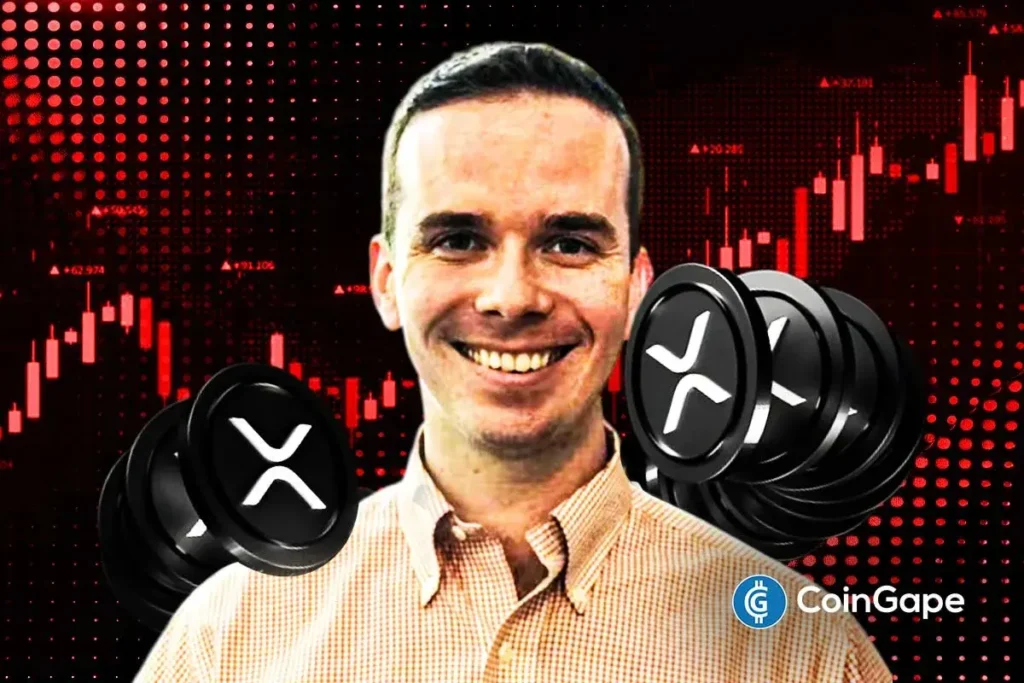Pierre Rochard on XRP and the Tokenization Debate: Analyzing the Future of Crypto Valuation
Pierre Rochard, the CEO of Bitcoin Bond, recently made headlines by questioning the rising hype surrounding tokenization as a foundational driver for the value of XRP. His comments came at a time when XRP experienced a significant price downturn, facing a 6% drop within 24 hours. This article explores Rochard’s criticisms, the implications for XRP and the broader crypto landscape, and the ongoing discussion around tokenization in digital finance.
The Limits of Tokenization for XRP
In a series of posts on social media platform X, Rochard expressed skepticism about the investment thesis behind popular cryptocurrencies, particularly Ethereum and XRP. He highlighted that the value proposition for these tokens heavily relies on the assumption that tokenization of securities will occur on their respective blockchains. According to him, the underlying model suggests that transaction fees should be burned to benefit token holders, a concept he considers inefficient and impractical in the long run.
Rochard emphasized that established institutions like the Depository Trust & Clearing Corporation (DTCC) already serve as highly effective clearing and settling mechanisms for securities transactions. He remarked, “The sales pitch of burning fees to increase token value is a non-starter. Existing systems already operate smoothly with low fees.” This critique suggests that XRP may struggle to compete against entrenched financial infrastructure, thus limiting its growth potential through tokenization.
Exclusions and Risks in the Crypto Landscape
Rochard’s analysis goes further, suggesting that the crypto ecosystem predominantly attracts those excluded from traditional finance avenues. This trend could inadvertently shift transaction costs onto the least affluent participants. He raised crucial questions about whether this model could create genuine demand for XRP itself, indicating that even if tokenization flourishes, it might not lead to significant interest in holding XRP assets.
He noted, “Increasing utility for security tokens may boost demand for those tokens, but it does not translate into a demand for holding XRP.” Such insights challenge the foundational assumptions that have driven enthusiasm around tokenization within the crypto community, pointing to the necessity for a more robust and sustainable model for asset appreciation.
The Uncertain Future of XRP Value
Rochard’s comments reflect a broader skepticism about the future value of XRP as well as other altcoins. He branded XRP as a "retail token" lacking institutional credibility, highlighting that utility alone is not enough to sustain long-term price growth. His questioning raises important considerations for investors pondering why they would hold XRP, Ethereum, or Solana when they could merely use these networks while opting for more stable value storage options like Bitcoin or stablecoins.
This skepticism appears timely, as the XRP price saw an intraday low of $2.96, underperforming against many other cryptocurrencies in the top ten. Liquidations exceeding $460 million occurred in the market, with long positions absorbing the brunt of the losses. These developments underscore the fragility in the altcoin market and the fading optimism surrounding XRP’s potential.
Ripple’s Continued Pursuit of Tokenization
Despite Rochard’s critical stance, Ripple and its partners have not slowed down their endeavors in the realms of tokenization. Notable projects are underway, including Mercado Bitcoin’s plan to tokenize $200 million worth of real-world assets and Ripple’s collaboration with Ctrl Alt to tokenize property title deeds in Dubai. These initiatives aim to enhance transparency and liquidity, signaling a commitment to advancing the potential of tokenization on the XRP Ledger (XRPL).
Simultaneously, there is a growing interest from major financial institutions in the tokenization arena. Firms like BlackRock, Nasdaq, and Fidelity are expected to discuss the intersection of traditional finance (TradFi) and decentralized finance (DeFi) in upcoming industry events. Advocates of tokenization argue that these interactions could ignite primary demand for real-world asset-linked tokens, setting the stage for broader acceptance.
The Divide Between Bitcoin Maximalists and Altcoin Supporters
Rochard’s sharp dismissal of the tokenization narrative amplifies an existing divide within the cryptocurrency community, particularly between Bitcoin maximalists and proponents of altcoins. This discord highlights a broader skepticism about the long-term viability of altcoins like XRP, especially when juxtaposed against Bitcoin, which many investors view as a more credible store of value. The discussions surrounding tokenization and utility necessitate rigorous debate and scrutiny as the fragmented market navigates its future.
In summary, as Ripple continues its tokenization efforts, the opinions expressed by industry figures like Rochard serve as critical reminders that enthusiasm alone cannot dictate value within the crypto ecosystem. Instead, a deeper understanding of the mechanisms at play—including institutional involvement, the role of established financial entities, and the implications of existing infrastructure—will shape the landscape of digital finance in the years to come.
Conclusion: Navigating the Future of XRP and Tokenization
In conclusion, Pierre Rochard’s recent remarks on the value of XRP amidst the growing buzz around tokenization present a multifaceted perspective on cryptocurrency’s evolving narrative. While tokenization projects gain traction, questions about their long-term viability and impact on token demand remain. Investors and stakeholders in the crypto space must navigate these complexities with caution and informed discernment, considering both the potential benefits and risks inherent in a rapidly changing financial landscape. The relationship between traditional and decentralized finance will be crucial as we look toward a future where digital assets may redefine valuation paradigms within the global economy.


